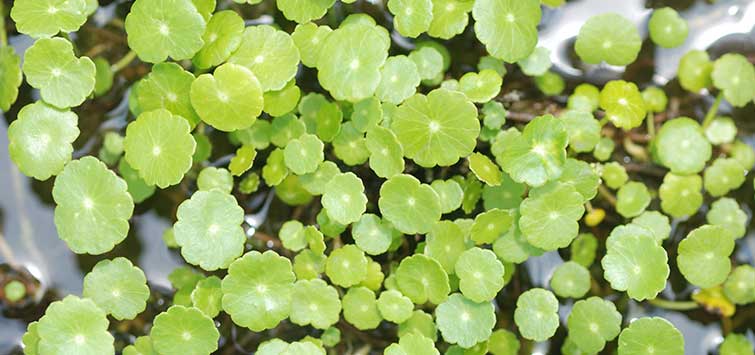The Planted Tank: Botany: An Introduction to Plant Biology, Part 3, How Plants Work
Author: Rhonda Wilson
My previous two columns looked at the history of botany, the structure of plants, and some of the terminology used within this subject. This month’s installment will examine how the plants actually work.
BACTERIA TO PLANTS
The first organisms to photosynthesize were bacteria. Very recent studies reveal that the first bacteria to do so were the non-oxygen producing purple and green bacteria, followed by heliobacteria. Later-developing bacteria produced oxygen in photosynthesis, as does the commonly known cyanobacteria which appeared even later, followed by algae and plants.
THE DISCOVERY OF PHOTOSYNTHESIS
The discovery of photosynthesis began by with the question of where plants get their mass. Early experiments were carried out in the 1600s to try to find out. The first was by a Flemish scientist, Jan Baptista van Helmont. He grew a willow tree in a pot and noted that, though the plant had grown in mass, the soil hadn’t changed much at all. So he hypothesized that the water had contributed to the increased mass of the plant. Later Cambridge professor John Woodward conducted some experiments to test van Helmont’s idea and found that it was not the water that was contributing to the increased mass of the plants. But still no one knew what the plants were using to increase their mass.
The next person to contribute to our knowledge of plant photosynthesis and gasses in general was an amazing man, Jason Priestly. Priestly, an Englishman, studied to become a minister. He met Benjamin Franklin in 1766 and a year later began an amazing series of discoveries. His accomplishments ranged from grammar to electricity to discovering gasses, and he was instrumental in our understanding of the composition of water. In 1772 he presented a paper called “On different kinds of air.”
At one point in his life he lived next to a brewery and noticed the gas produced by the fermenting process floated near the ground, which indicated it was heavier than air. This was carbon dioxide, and he found a way to make it at home, mixed it with water, and discovered carbonated water. He also conducted experiments with sealed containers, plants, candles, and later mice, which demonstrated that plants somehow changed the air. He believed plants restored the air. His theories as to how and what happened weren’t entirely correct, but led to a clearer understanding later.
Priestly had very liberal ideas for his day, and he eventually found the need to move to the United States where he spent the last 10 years of his life, also becoming friends with Thomas Jefferson during that time. He contributed a great deal more knowledge to the world, and he is a very interesting man to study.
Jan Ingenhousz was the next person to make a large contribution to our knowledge of plants. He also used candles and mice to discover that plants needed light to “purify” the air. He also tested aquatic plants in light and darkness and noted the gas bubbles that form when the plant was in bright light.
Finally, Julius Robert Mayer, a physicist from Germany, realized that the energy from light was transformed in plants to produce new chemicals.
DETAILS OF PHOTOSYNTHESIS
6H2O + 6CO2 À C6H06 + 6O2
This means that six molecules of water and six of carbon dioxide, in plants, with energy from sunlight, will produce one molecule of sugar and six of oxygen. But this is a simple statement for a very complex process.
In a typical terrestrial plant, leaves take in oxygen and carbon dioxide, while the roots supply water through the plants vascular system. The leaves must protect themselves from drying out and still be able to exchange gases, so they have special holes called stomata for gases to enter or be released. They still do lose a lot of water, but it usually allows them to retain enough to not dry out.
Photosynthesis takes place in chloroplasts, which are organelles, or parts of the plant’s cells. The chloroplasts contain pigments in little stacks of structures called thylakoids. There are many thylakoids in the chloroplast, arranged in pancake-like stacks called granum. These are all surrounded by a liquid called stroma, all of which play a part in photosynthesis.
Pigments give living things their color and are what makes plants green. The pigments absorb some colors of light and reflect others. The colors reflected are what we see. In plants there are several basic types of pigments: chlorophylls, carotenoids, phycobilins, and xanthophylls. The most common chlorophylls are simply labeled chlorophyll a, b, and c. Chlorophyll a is the most important and the one that gives plants their green color by reflecting green while absorbing mostly violet, blue, red, and orange colors. The other pigments in plants are called accessory pigments. They absorb energy from other colors and can help a plant utilize the most energy in its specific surroundings, such as under water, where not all colors of light may penetrate.
Photosynthesis takes two different steps. These steps are called light reactions and dark reactions. In the light reaction phase, energy from the sun causes the chlorophyll to lose an electron. It’s going to want to get that electron back though, so it takes it from the water. This is when the oxygen is released as a waste product. The electron that was originally lost from the chlorophyll goes through a series of proteins called the electron transport chain. This process creates chemical energy called ATP and NADPH, which are used in the second step. In the second step, the hydrogen left over from when the oxygen gets released from water is added to carbon dioxide with the energy created earlier to make sugar in a process called the Calvin Cycle. It’s these sugars that everything else in the world needs to feed on, either directly or indirectly through eating the plants.
PHOTOSYNTHESIS, LIGHT, AQUATIC PLANTS, AND CO2
In the air there’s usually a lot more available light and CO2 for plants to utilize, and the levels are more stable. Aquatic plants have developed some different adaptations to deal with this situation.
Submersed leaves are different from leaves of plants grown emersed, even in the same plant. The leaves of aquatic plants are usually very thin compared to terrestrials. Many aquatic plants have highly dissected leaves—frilly leaved plants like hornwort is a classic example. They do this to create a higher ratio of surface area to the volume of the plant. This allows them to get more CO2 from the water.
Other strategies include floating leaves (like water lilies) and sending up emersed leaves, which quite a few of the stemmed plants will do in your tanks if you let them. These leaves can utilize the full sun and CO2 in the air, just like the fully terrestrial plants do.
The internal structures of submerged plant leaves are different from terrestrial plants also. The stomata that regulate the passage of gases in terrestrial plant leaves are absent in submerged plants. And while the stomata are on the lower part of terrestrial plant leaves, they are on the upper part of floating plants.
OTHER NUTRIENTS
In addition to water and carbon dioxide, plants also need other nutrients to live. Nitrogen, phosphorus, and potassium are the other major plant nutrients needed. They also need calcium, magnesium, sulfur, and even smaller amounts of iron, boron, copper, chloride, manganese, molybdenum, and zinc. Some of these are usually found in your aquarium water, but others can be used quickly by your plants.
The easiest way to ensure your plants have the appropriate nutrients is to do regular water changes and use fertilizers professionally prepared for the aquarium. For those folks who are a little more adventurous, or want more specific control, there are a number of DIY recipes available. A web page search is a great way to find some of those recipes.
AN INFORMATIVE SPEECH
I had just finished writing this month’s column on Friday night before going to San Francisco to spend the weekend at the Aquatic Gardeners Association Convention, which I have to say was a well-planned and wonderful event. One of the speakers was Dr. Ole Pedersen from Tropica of Denmark. During his talk he brought up something that I’ve wondered about for quite some time. Though CO2 injection in planted tanks has been popular for a number of years now, I’ve often wondered how the levels people are putting into their aquariums correspond with what’s actually in natural waters. During Dr. Pedersen’s talk he presented a map with rivers and lakes that showed their natural CO2 levels. Some creeks can have even more CO2 than what’s generally recommended for the planted aquarium. Lake levels, on the other hand, can be quite low.
The differences in other types of nutrients available in natural waters and the aquarium were quite extreme, and Dr. Pedersen showed us some charts that showed that the nutrients most available in the typical tap water and in our aquariums is just about opposite of what occurs in the tropical waters many of our plants come in.
For those that have read my column for a while you may remember that I haven’t been using CO2 and very seldom other fertilizers in my tanks. After listening to Dr. Pedersen’s talk I’m finally convinced enough to try a slightly higher-tech tank myself, with CO2.
Knowing what levels of nutrients occur in natural waters can help us all to create the best environment for the plants and animals that once lived there when we bring them into our homes.

.png?h=595&iar=0&w=2781&hash=5FD5E69473BCC22199FBFA2FB71B6033)



